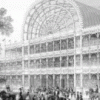
Audrey Jaffe, “On the Great Exhibition”
This entry considers the Great Exhibition in the context of Victorian England’s developing commodity culture and the forms of attention and distraction produced in relation to it. It discusses the stated purposes of the Exhibition, but is more interested in its experiential qualities: the way the movement of visitors was structured by the layout of hallways and rooms, the effect of the semi-transparent walls, and the sense of bewilderment that appears frequently in visitors’ accounts.
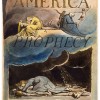
Diane Piccitto, “On 1793 and the Aftermath of the French Revolution”
In 1789, many British radicals interpreted the early events of the French Revolution in mythic terms, as signs that a cataclysmic event, akin to the Christian apocalypse (entailing the renovation of the fallen world), was at hand—and that, paradoxically, human beings rather than God were the agents of this absolute change. However, two major events in 1793 undermined the optimism of these readings: the regicide of Louis XVI and the start of the subsequent Reign of Terror. These disturbing events left many radicals questioning the viability of revolution and, more specifically, the efficacy of violence in producing fundamental and widespread change for the better. Using William Blake’s America as a case study, this article examines how the violence of 1793 not only complicated and ultimately terminated the possibility of interpreting the revolutionary events in France as a fulfillment of the grand biblical narrative of human regeneration but also placed in doubt the potential for human interventions in the historico-political realm to ever initiate this new world.
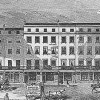
Pamela Fletcher, “On the Rise of the Commercial Art Gallery in London”
The modern commercial art gallery emerged as a distinct institutional form in the middle years of the nineteenth century, profoundly changing the physical, economic and social relationships between artists, dealers, art objects, and viewers.
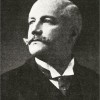
Brenda Assael, “On Dinners and Diners and Restaurant Culture in Late Nineteenth-Century London”
Lieutenant Colonel Nathaniel Newnham-Davis’s Dinners and Diners, published in 1899, provides a lively and valuable introduction to the restaurant in late nineteenth-century London, an aspect of Victorian metropolitan experience that has been largely overlooked by historians. This article uses Dinners and Diners to explore three aspects of Victorian metropolitan culture that are dramatized through public eating: first, the centrality of cosmopolitanism; second, the relationship between changing gender roles and new forms of urban sociability; and third, the significance of the theater and theatricality in late-Victorian culture.
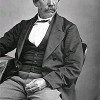
Matthew Rubery, “On Henry Morton Stanley’s Search for Dr. Livingstone, 1871-72”
The meeting between Henry Morton Stanley and Dr. David Livingstone in Africa was one of the most sensational news stories of the nineteenth century. Stanley’s greeting, “Dr. Livingstone, I presume?” is still a well known phrase. The Scottish missionary had been out of contact for several years when an American newspaper sent its correspondent to search for him. The meeting turned public attention to the African slave trade and was a pivotal moment in the relationship among the United States, Europe, and Africa.
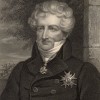
Martin Meisel, “On the Age of the Universe”
The Charles Darwin-inspired debate over the Age of the Earth that pitted contemporary Physics against the theory and practice of contemporary Geology was intimately tied to recent unsettling projections on the thermodynamic fate of the universe. The leading voices in the debate were William Thomson, later Lord Kelvin, and Thomas Henry Huxley, Darwin’s most able champion. The argument—resolved only in the next century—has exemplary value as an intractable dissonance between two vigorous and well established, but not entirely secure scientific disciplines. And its content laid some of the groundwork for the pessimism that qualified the cult of progress and the whiggish habits of cultural and material complacency towards the end of the century.
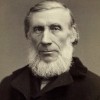
Bernard Lightman, “On Tyndall’s Belfast Address, 1874”
John Tyndall’s Belfast Address at the British Association for the Advancement of Science in 1874 touched off a heated controversy over his alleged materialism. His enemies expanded their criticism of his materialism to include Victorian scientific naturalists. An analysis of the Belfast Address and the controversy surrounding it provides insight into the status of Victorian scientific naturalism during the 1870s.
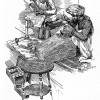
Aviva Briefel, “On the 1886 Colonial and Indian Exhibition”
This essay explores the 1886 Colonial and Indian Exhibition, focusing specifically on its unprecedented display of 34 Indian artisans. It contextualizes this display in relation to Victorian discourses that lamented the disappearance of the British working body through mechanization, and that conflated the authenticity of South Asian crafts with the presence of “genuine” Indian bodies.

E. Warwick Slinn, “On Robert Browning’s Men and Women“
Robert Browning’s Men and Women, a two volume publication of new poems, was a major literary event in nineteenth-century Britain. These poems shift emphasis from the private, atemporal, and generally non-social genre of Romantic lyricism to the ironies and enigmas of human awareness and social relationships, to dramatic action in human speech. Browning’s men and women are presented overtly as speech acts, grounded in psychological and cultural origins, and in the ambiguities of linguistic processes. Readers often found Browning’s mode of writing obscure, but its methods and implications consistently engage with other domains of Victorian thought—in religion, biology, and psychiatry. While the status of this publication was not widely understood at the time, its value is manifest in its reception history, in the discussion and representations that constitute its ongoing existence as a historical event.
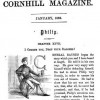
Linda K. Hughes, “On New Monthly Magazines, 1859-60”
In November 1859 and January 1860, two new shilling monthly magazines, Macmillan’s Magazine and Cornhill Magazine, entered Victorian markets. Long considered a landmark of Victorian literature and culture in twentieth-century publishing histories, this dual debut is both a historical event and a useful lens for reconsidering methods of print culture studies today.
